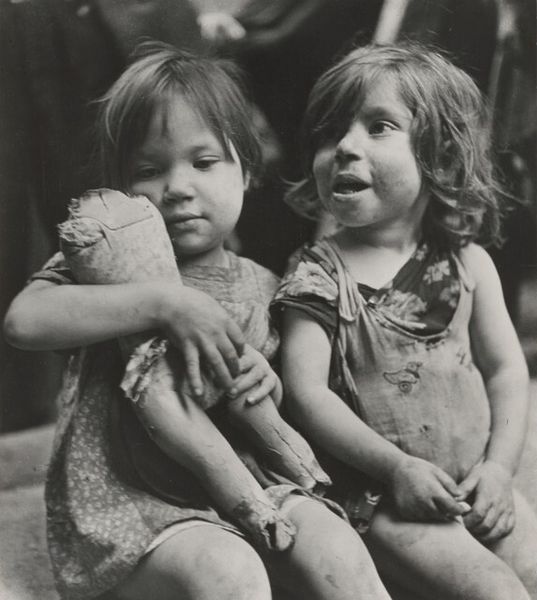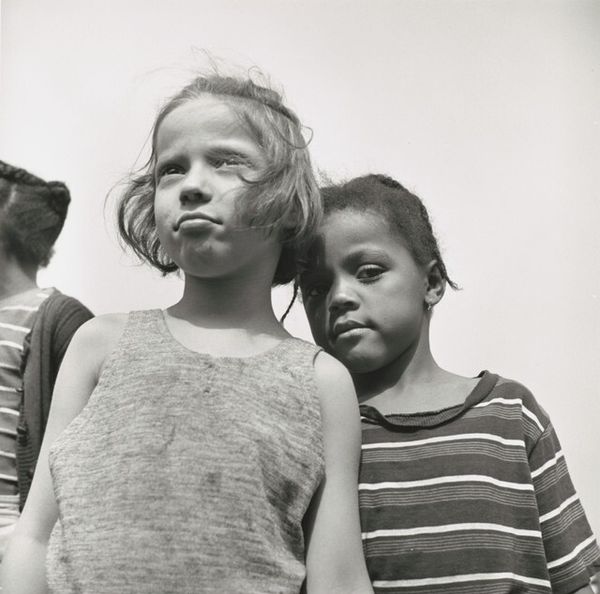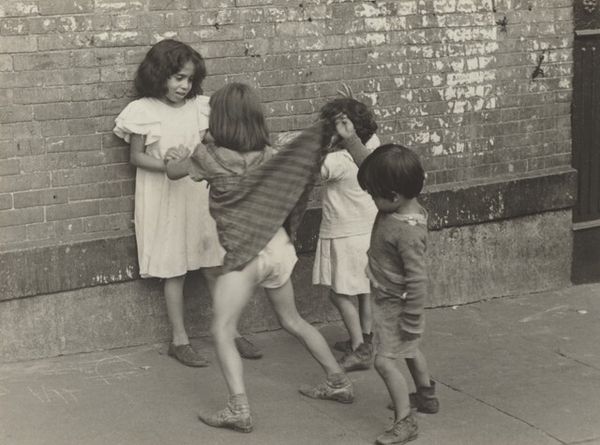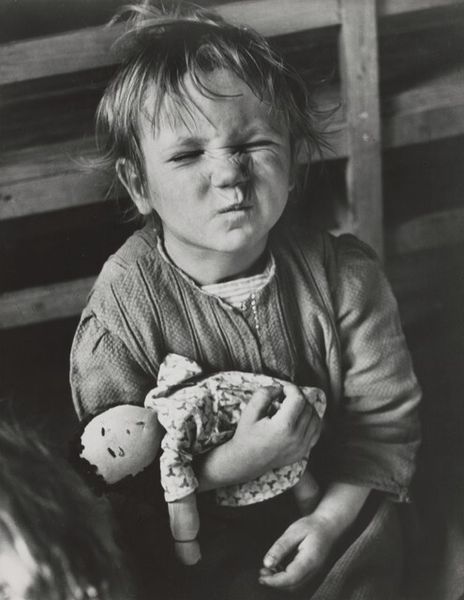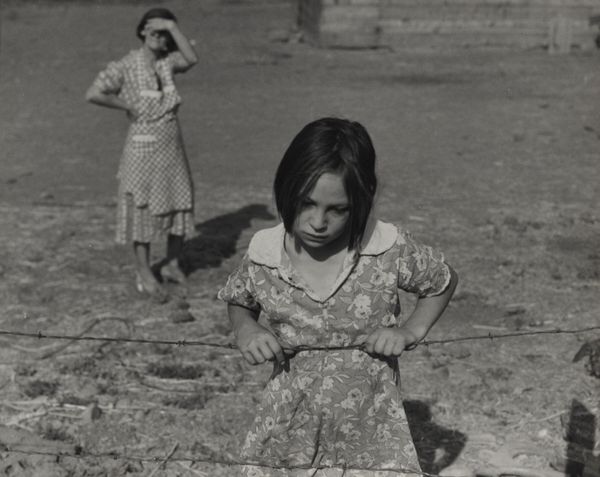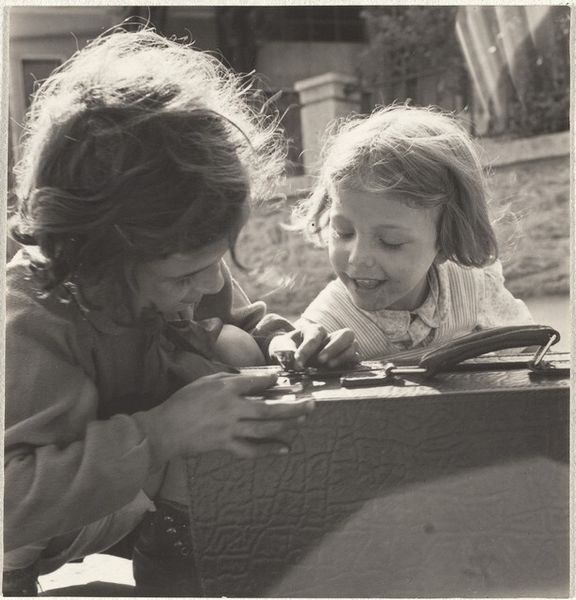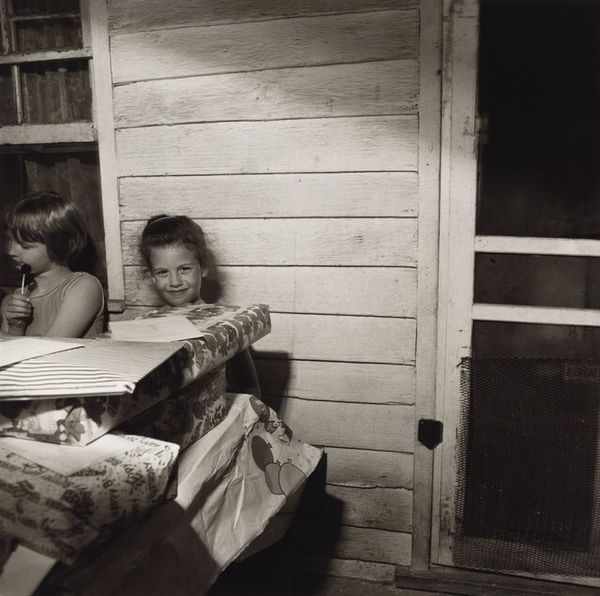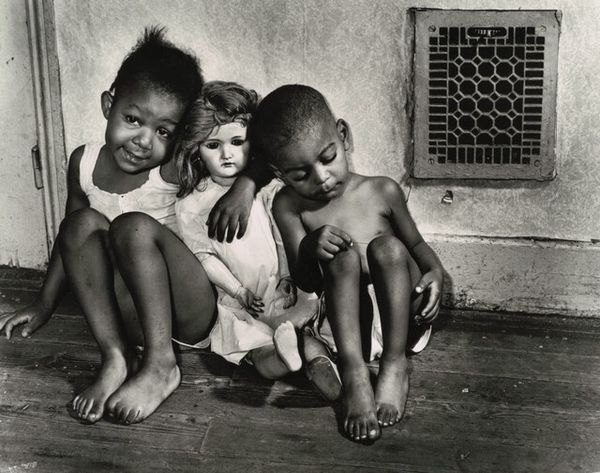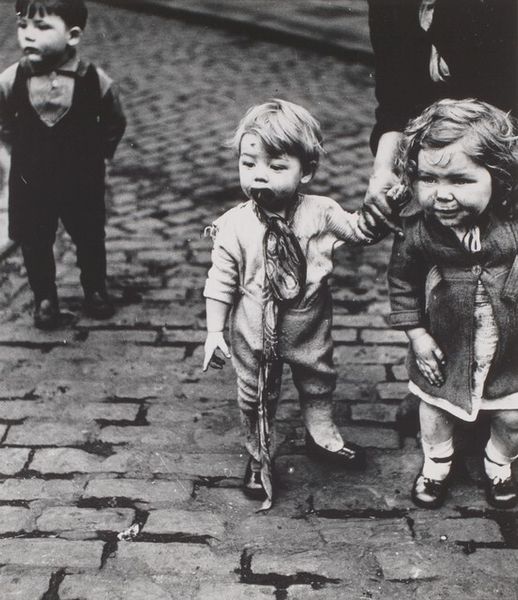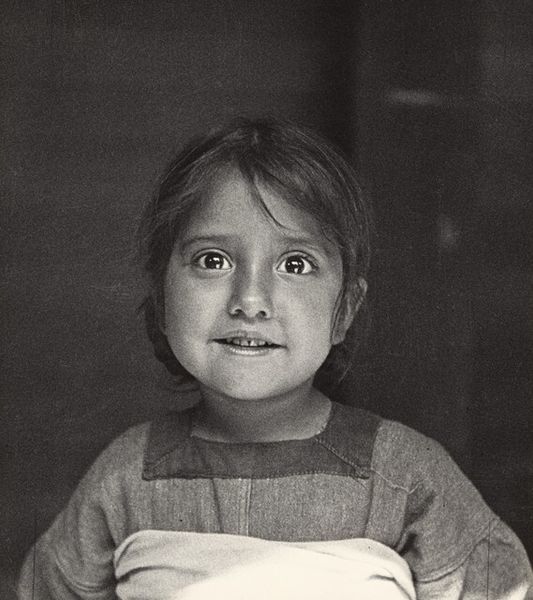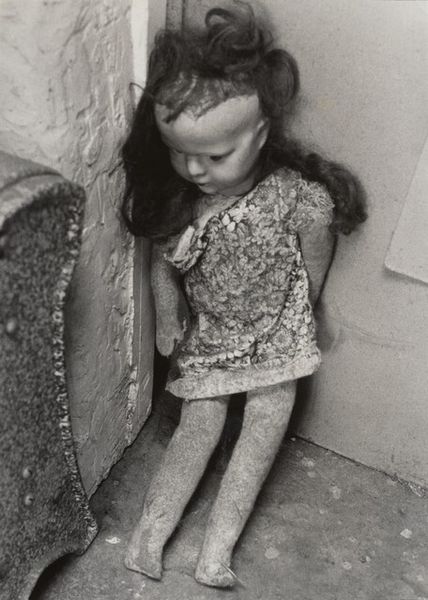
photography, gelatin-silver-print
#
portrait
#
african-art
#
black and white photography
#
black and white format
#
social-realism
#
archive photography
#
street-photography
#
photography
#
historical photography
#
black and white theme
#
black and white
#
gelatin-silver-print
#
monochrome photography
#
realism
Dimensions: image: 28.1 × 26 cm (11 1/16 × 10 1/4 in.)
Copyright: National Gallery of Art: CC0 1.0
Curator: This compelling black and white photograph is titled "Albia and Isabel, the Favela," taken by Gordon Parks in 1961. It’s a gelatin silver print. My initial read focuses on how Parks, within the conventions of social realism, sought to visually expose the circumstances surrounding poverty and childhood in Rio de Janeiro's favelas. Editor: The immediacy of this piece strikes me—that stark contrast, and the evident grittiness in its textures. The little girl's posture exudes sadness. Her little dress, the gestures of her hands...the lighting calls so much attention to her and I can feel a very specific type of desperation in it. What do you suppose he hoped to accomplish by using gelatin silver? Curator: It certainly heightened the contrast, as you note, for dramatic effect. He was employing documentary photography for social change. Parks used photography as a powerful means to advocate for social reform. It's more than just portraiture; it's a commentary. He challenged the predominantly white, middle-class perspectives in media. His choice to highlight children further tugs at the audience’s emotions and prompts conversations about social responsibility. Editor: And speaking of production and context: Consider that it’s silver gelatin, a relatively accessible process for the time, allowing for widespread circulation of these images in publications and exhibitions. What impact could a fine art material like gelatin have on documenting marginalized lives? It's fascinating how the medium itself becomes part of the narrative. It's about how we commodify these representations. Curator: Indeed, he knew this, the choice of subject, and the deployment and distribution were intertwined. Parks carefully orchestrated how and where his images were displayed, selecting venues that would maximize their impact on policy-makers and public discourse. The "politics of imagery," to evoke Abigail Solomon-Godeau, is highly present here. Editor: And thinking on the composition itself—it's interesting. What would viewers familiar with art making processes learn from analyzing the framing and the tonality here? Considering what materials mean, how does a gelatin-silver print engage with historical photography of this nature? Curator: Ultimately, “Albia and Isabel” pushed the boundaries of photography's role in addressing critical social concerns and questioning preconceived cultural biases prevalent in mainstream media during the Civil Rights era. Editor: Yes, it forces us to confront our relationship with visual culture itself. In short, the means and methods of production have direct correlation to our consumption of imagery—which, I'll grant, is what Parks may have hoped for!
Comments
No comments
Be the first to comment and join the conversation on the ultimate creative platform.
